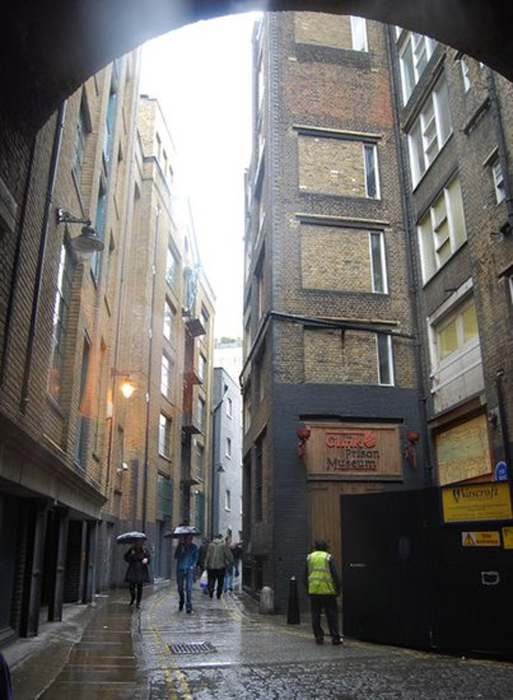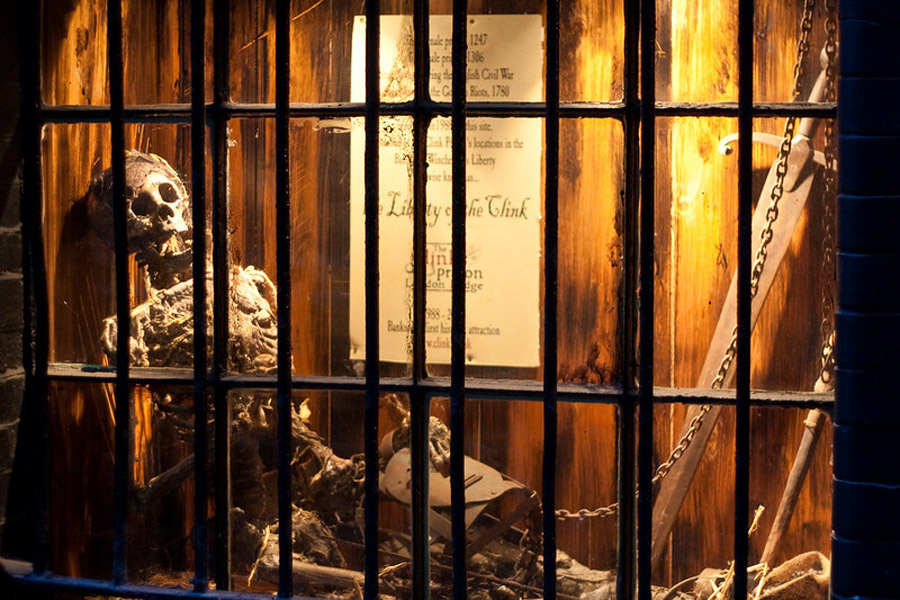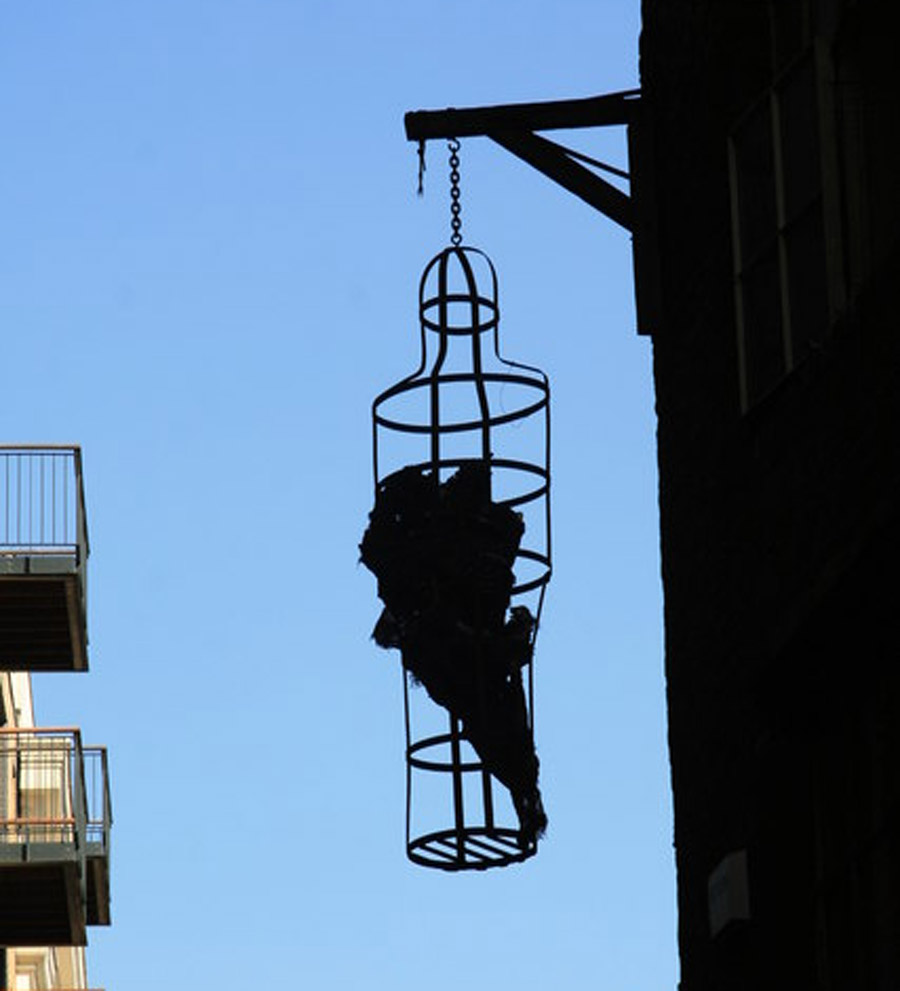Imprisonment as a punishment has long been a part of human society, serving as a temporary version of exile, used for lesser crimes. However, the concept of a specific building to house all prisoners together, as opposed to dungeons and cells in castle strongholds, led to the first purpose built prison: The Clink.
This grim and foreboding building became one of the most notorious medieval prisons in London. Located in Southwark on the south bank of the Thames, it was in operation from the 12th century until 1780, the longest running prison in history.
Purpose-Built
The construction of the prison started in 1107 and was finally finished somewhere between 1144 and 1149. The Clink consisted of two prisons, one meant for women and the other for men.
It existed for more than 600 years in the heart of an area that is popular for raucous behavior and criminal activities. It was owned and operated by the Bishop of Winchester, serving the manor area of Winchester Palace, called the Liberty of the Clink.
It is not clear whether the name of the prison itself has been derived from the Liberty of the Clink. There is a possibility that the name originated from the sound of the collision of metals created when the doors of the prison were bolted. It is also possible that the name “The Clink” has been derived from the rattling sound created by the chains of the prisoners.

Being the owner of the Liberty, the Bishop used to keep all the revenues coming from the land, including tenants. He had the power to send anyone to prison who failed to make payments, making The Clink an early debtors’ prison. The Bishop could also imprison heretics, or those he decided were heretics.
Bad Behavior
The Clink was well located, as the surrounding area attracted a number of activities and businesses that were not allowed in London itself. The activities were mainly prohibited because they were outside the rules and regulations of the City of London, which lay just across the river to the north.
The area facilitated activities such as bull and bear-baiting, prostitution, gaming houses, brothels, and inns. Alarmed at his lands becoming a hotbed of illegal activities, the Bishop of Winchester made a decision to construct a prison to gain control over the area and enforce harsh punishment on people.
In its long tenure, the prison has witnessed a huge amount of political and social changes in England. Throughout the existence of the prison, a number of sinners were imprisoned, including drunkards, debtors, harlots, heretics, and religious adversaries.
With the existence of the prison, the phrase “in the clink” entered popular usage. It was assumed to be a type of slang in order to indicate someone in prison or in a cell.
A Place of Torture
The life of the prisoners in The Clink was terrifying. The prisoners were tortured, subjected to unimaginable pain and treated with extreme brutality. Among all the harsh punishments, the most popular one was that in which fetters and irons were used in order to prevent the prisoners from sleeping. In a number of cases, this punishment even led to paralysis.
Another kind of punishment was to force the prisoners to stand in water until their feet were rotten. Women in prison were also treated in a harsh way as men. The women who were found guilty of adultery were tied to a pole and suspended in cold oil. The cold oil was then gradually made to boil, thereby leading to an extremely painful death.
The only way to reduce the level of cruelty of the punishments was to bribe the jailors. The jail keepers were paid very little, and so often looked for ways to supplement their income.
The friends and relatives of the prisoners who were outside The Clink would provide these bribes to the jailors. They took the bribe in order to make the lives of the prisoners better. The jailers used to hire out rooms for the prisoners and add amenities such as bedding, beds, fuel, candles, and more.

They even provided the prisoners with extra food and water. However, in exchange for that, the jail keepers used to charge double the rate of what the food actually cost outside. The prisoners were even allowed to remove the iron chains from their legs for some time.
- Poveglia Island and Its Haunting History
- Weird Science! What was James Graham Doing in His Electric Sex Temple?
The female prisoners were also given permission to continue running their brothels from the prison. Any cash that was made through this business went directly to the jailers. In this way The Clink became very profitable as the prisoners were made to pay the fee of the jailors.
Hated by the People
In 1450, rioters who protested the new Statute of Laborers raided Winchester Palace, which adjoined The Clink. All the jail keepers were murdered, and prisoners were freed. Finally, The Clink was burned down completely.
However, this was not the end of The Clink. After the rioting was quelled, it was built again and even expanded in order to make it a larger prison. Rebuilt and enlarged, it cast a long shadow as a dark, monolithic building in the heart of London.
The Clink housed some historically significant criminals. One of the prominent examples was Sir Thomas Wyatt The Younger, who led a rebellion against Queen Mary I in 1554. Another famous prisoner was John Rogers, locked up and tortured for the crime of translating the Bible from Latin to English, also during the reign of Queen Mary I.
However it was more unusual for nobles to be imprisoned here. Instead, they were normally held in the Tower of London, the huge Norman keep about half a mile (800 m) downriver.
The Decline of The Clink
The year 1649 marked a turning point in the fortunes of Winchester Palace, with the old buildings sold off to a property developer. The Palace was divided into tenements, dye houses, and shops. The Clink remained, but as a smaller prison of holding cells.
In 1732, the prison had only two inmates, and by the year 1745, all prisoners were in a temporary prison elsewhere. Surplus to requirements, The Clink had started decaying.

In 1780, it was attacked again by the “Gordon rioters,” and gutted by fire. It was never rebuilt again, with parts of the prison being used for a flour mill.
Nowadays it is a tourist attraction. The Clink Prison Museum, on the original site and next to the ruins of Winchester Palace, recreates the original conditions of The Clink prison for the general public.
Top Image: The clink had a fearsome reputation. Source: Marina / Adobe Stock.
By Bipin Dimri